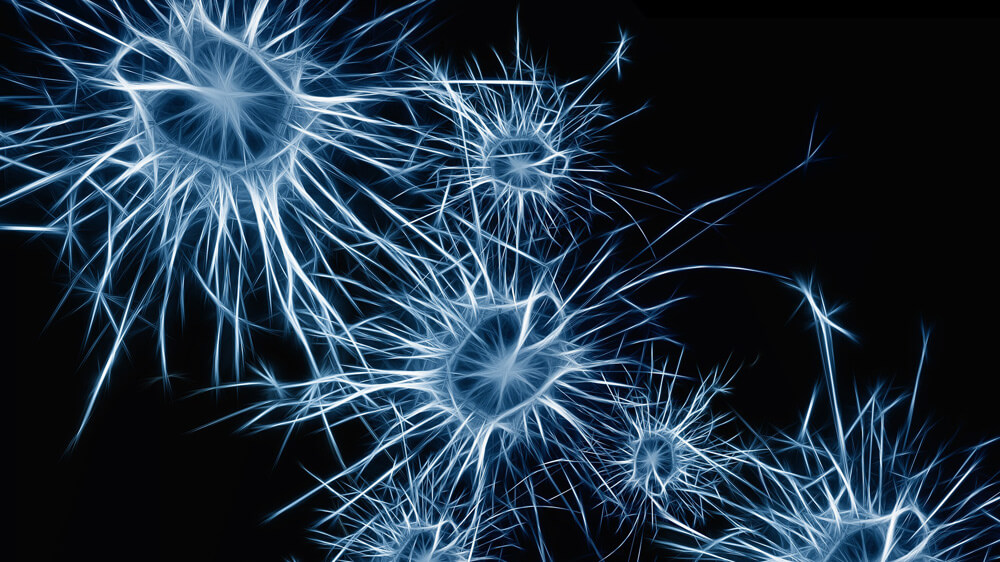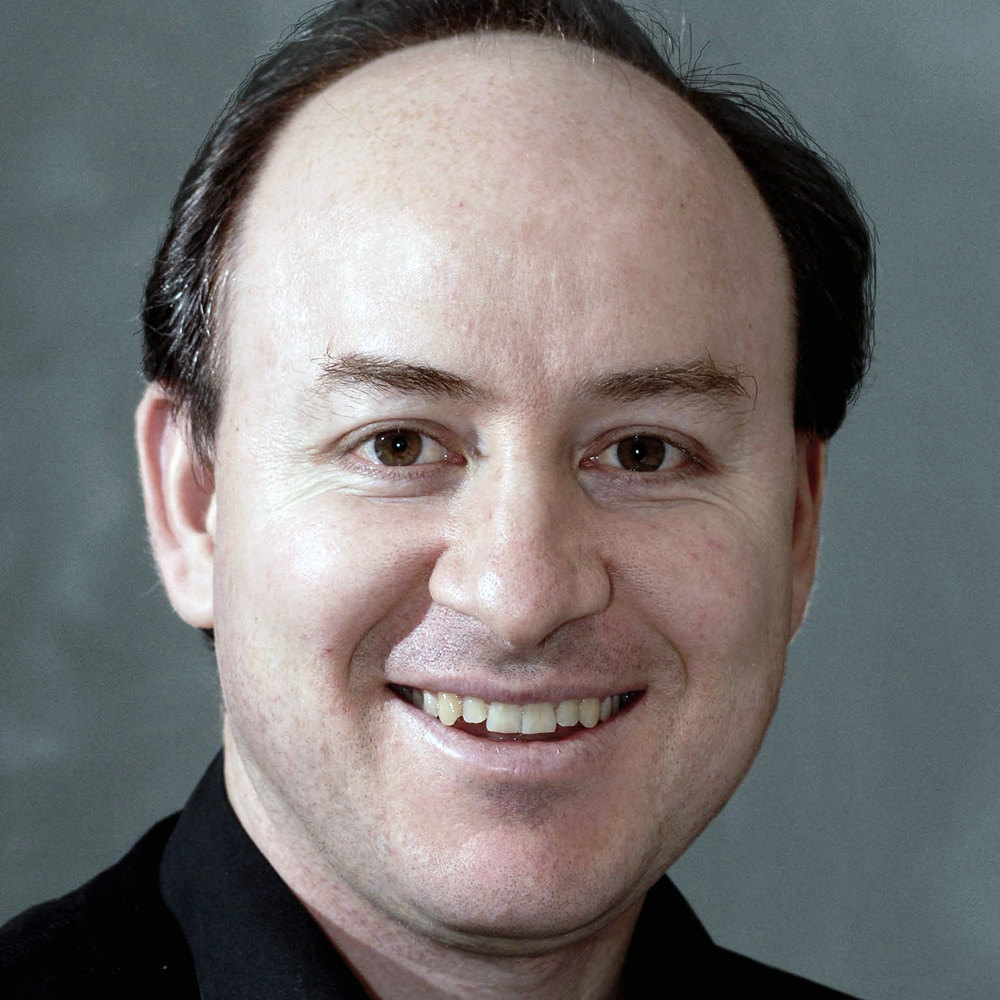NeuroCure – A Cluster of Excellence in the Neurosciences

04.05.2017 | The language of the brain - Interviews with Professor Larkum and Professor Sigrist from NeuroCure
Since 2007, the NeuroCure Cluster of Excellence has brought together scientists from six institutions, with an annual budget of around EUR 6 million. Professor Larkum and Professor Sigrist are two of the researchers who work on neuroscientific issues with their project groups. We interviewed them about their research, their objectives and why Berlin is perfect for them.
Neuroscience on the river Spree - Prof. Matthew Larkum since 2011 in Berlin at NeuroCure
The married couple agreed: after 14 years in Heidelberg and Berne, it was time to move to a big city, an option which was equally appealing to her as a musician and to him as a neuroscientist. They narrowed their selection down to London and Berlin. In 2011, Matthew Larkum and his wife then decided to move to the German capital – because of NeuroCure. This form of cooperation at NeuroCure was the crucial factor in Matthew Larkum’s decision to move to the city on the Spree. ‘Although more neuroscience is being practised in London,’ says the Australian-born researcher, ‘it isn’t as coordinated and interdisciplinary as in Berlin.’

Research with a long path ahead of it
He works with his twelve-strong team first and foremost on understanding the language of the brain, known as the neural code. ‘If you compare the brain to a computer,’ says Larkum, ‘at first they both seem to work with a binary code, i.e. they use only two words. In the computer, those two words are “one” and “zero”, and in the neurons, they are “action potential” or “no action potential”.’ Nevertheless, the brain is vastly superior to computers in many tasks, for example, in facial recognition. ‘This is why, beyond the vocabulary, there has to be another level on which the neurons communicate.’ The key could lie in the complex structure of the neurons involved, which differ greatly depending on their place in the brain.
Larkum believes that it will take another five to ten years of research to understand this complexity that exists within the brain. The findings would then not only benefit the field of medicine, but artificial intelligence systems as well. ‘If our research achievements were only judged based on treating illnesses, that would be lopsided,’ says the head of the Larkum Lab. ‘The interdisciplinary structure of NeuroCure ensures that new information can be tapped into in entirely different areas.’
A fruit fly’s journey of discovery - A conversation with Professor Stephan Sigrist
Fruit flies can trigger different associations: many people think of rotten fruit and immediately set up sticky traps. Professor Stephan Sigrist from the NeuroCure Cluster of Excellence in Berlin is convinced that these insects provide us with important information on how our brains age. The researcher also hopes to use his knowledge to develop new approaches to treating dementia.
Prof. Sigrist, what is it that fascinates you about your work as a neuroscientist?
Science is always a journey into the unknown. As a researcher, I have the unique opportunity to discover new connections. That’s hugely motivating. I’m fascinated by life itself and particularly the exciting way our brain functions evolve.

What were your reasons for moving from Würzburg to Berlin in 2008?
The overall conditions in Berlin were very good for me. Thanks to the support of Free University of Berlin and the structures of the Cluster of Excellence, I was able to study key questions involving synaptic structures together with a skilled team. That was exactly what I wanted. It also happened that I was already friends with some of my current colleagues, which of course creates a wonderful atmosphere within the team.
How would you describe the significance of your research for the treatment of diseases in layman’s terms?
First and foremost, we are, of course, conducting basic research, which will not immediately lead to a new medication or treatment. But investment in an in-depth understanding of how our brains function is worth it in the long term. Conducting strictly application-oriented research on its own is not enough. You can’t repair a car if you don’t know where the different parts are and what they do.
You wouldn’t even know where to start with the repairs...
Exactly. And although we are working on basics, our research is very topical: for example, we are studying how our nervous system changes as we age. These connections are increasingly relevant in our ageing society. We assume that the brain synapses acting as central contact points between the neurons in the brain are very sensitive and become defective particularly often in older people. This causes a disruption in communication between the neurons. The transport processes and the flow of information, which occurs in a matter of milliseconds, no longer run smoothly; the person’s cognitive functions then deteriorate. This is particularly dramatic with illnesses such as Alzheimer’s disease. However, according to our latest discoveries, a simple substance from the polyamine group, spermidine, helps to maintain cognitive performance – almost acting as an anti-ageing cure for the synapses. This might also be able to slow down mental decline.
That sounds excellent! It has certainly taken a long way to get here: if we look back a few years in your career, there’s a publication on a protein called ‘crashpilot’ (Bruchpilot). What's that all about?
Yes, it’s a bizarre name! In the past decade, the scientific understanding has been that the synapses are the crucial parts of the neurons and that they are formed when proteins accumulate. During my time in Würzburg, I worked with colleagues on research into a specific protein which is present in the nerve centre of the fruit fly. We discovered that this protein has a key framework function for the synapses: when we reduced the concentration of the protein, the flies would regularly crash-land. That's how the protein got its name. We now know that there is a related protein in human synapses which is responsible for similar functions (e.g. motor coordination). Only it’s easier for us to study these in the flies’ synapses, of course.
What is the most exciting discovery you have made since you started working on the NeuroCure project?
I think that the anti-ageing cure with spermidine I described before was the biggest surprise, at any rate.
While we’re on the topic, one more question: how significant for you are Prof. Thomas Südhof’s research findings, for which he was awarded the Nobel Prize in Medicine?
His research is absolutely fundamental to our work. Prof. Südhof and his colleagues have set the course for our understanding of how synapses work. The discovery of the vesicle function and structured expansion of this knowledge made the current state of research in this area possible. Unfortunately, Nobel prizes can only be given to some of those involved. I believe, for example, that the German cell- and neurobiologist
Reinhard Jahn also deserves recognition in this regard.